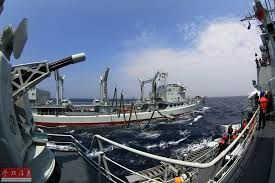Levels and trends of modern conflict

In this era of globalization, war and conflict patterns have changed dramatically. Modern conflict has the following trends:
Type of war, most of the colonial war of liberation in 1975 formally end; since 2000, armed conflict between nations become scarce in recent few years (2009-2014), all armed conflicts have occurred in the sovereign state inside, belonging to a civil war type, but about a quarter of the civil war there are other foreign military forces intervention, so that the intensity of the conflict has escalated. Research on Human Security Report 2012 showed that if there is state support of other countries where civil war on the military side, will make the number of deaths is more than twice the normal armed conflict a civil war.
From 1989 to 2008 statistics opinion, the number of armed conflicts and the death toll had increased substantially during 1990, the overall trend after the Cold War has continued to drop, until 2004--2008 years have risen. In addition, although the number of conflicts and deaths in 2009 declined slightly compared with 2008, but the overall trend is not optimistic about the ability to maintain the decline.
In between 1950-1970, most of the armed conflicts in East Asia, Southeast Asia and Oceania, and between 1989 to 2009, about half the world's war in sub-Saharan Africa, but recently several years, Sri Lanka, Afghanistan, Pakistan, Iraq, Syria, Ukraine are armed conflict, so in the Middle East, North Africa and Asia to become the largest number of deaths in areas of armed conflict.
Since the beginning of the Cold War, civil war duration is shorter than before; however, after many modern civil war, and soon re-fire, because these armed conflicts usually occur in remote areas, the fine-scale civil war between rebels weaker, usually without apparent success and difficult to reach a peace agreement. In 1989--2009 years, this type of civil war does not involve national army has maintained 75% a year, about 10% for three years or more.
Peace agreements terminate armed conflicts than any other method is more effective in reducing the casualties of war, the recurrence of armed conflict if the peace agreement, its strength will be reduced 80% than before.
The targeting of civilians in armed conflict, the most serious in the mid-1990s, the 1994 Rwandan genocide, Hutu genocide of Tutsis conducted 500,000 civilian deaths, is by far the most serious attacks on civilians. In addition, the latest survey shows that in 1996 the civil war in the Democratic Republic of the Congo, the rebels killed at least 27000 civilians, more than the previous estimate of 6,000 civilians. As in the late 1990s to now, the targeting of civilians in armed conflict, the number of deaths (in years) are significantly lower than the mid-1990s.
Since 2000, particularly noteworthy trend of regional armed conflict: Arab countries countries like Mali, Syria and Yemen because of the Arab Spring and hold up; the same time, Southeast Asian countries such as Myanmar, the Philippines and Thailand also experienced intensified the internal armed conflict; in addition, to improve the multilateral relations between countries is the key to maintaining peace in the Asian region, including improving inter-Korean relations, Sino-Japanese relations, Sino-US interaction, as well as the links between China and Southeast Asian Countries.
